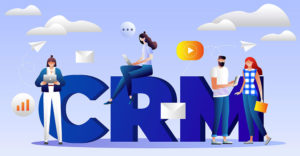With Dreamforce only days away, it’s no surprise that Salesforce is making a flurry of announcements. What is surprising is that there are two big ones this week involving partnering with other vendors, mostly on infrastructure — announcements that I believe make the idea of an information utility more real with each passing day.
Wednesday it was an announcement from Salesforce, AWS, Genesys and The Linux Foundation involving a common information model.
On Thursday Salesforce named Microsoft Azure its public cloud provider for Salesforce Marketing Cloud, and announced new integration between Salesforce Sales and Service Clouds with Microsoft Teams.
What It Means
My last post describes a vision of an information utility that’s forming, which I think will allow increasingly easy integration and information sharing.
One thing I overlooked is that the announced CIM, or common information model, is just that — an information model and not a data model. The significance is that the CIM assumes a solid foundation for data and begins its concerns with how the data is turned into information and shared. It’s a higher level of abstraction necessary for a utility, and we’ve spent a long time waiting for it.
With that mindset, where data gets stored is of less concern than the information it develops — but here I take a small exception. Azure is a fine database, though I don’t know it as well as I know Oracle.
My concern is that high performance in data storage today means in-memory and autonomous, things that Oracle is good at. In a world where data security threats are rampant, I have to believe that Salesforce and Microsoft are on top of the situation, but I wish they’d spend a few cycles discussing it.
It’s also significant that Salesforce, one of Oracle’s biggest customers, is working with AWS and Microsoft. It may mean nothing to Oracle, and Salesforce has to pursue opportunities where they are, but still… . I don’t see this as a slight to Oracle, but you have to say that after decades of relative calm in the DB world, things are becoming very interesting again.
My Two Bits
So Microsoft and Salesforce will work more closely to deliver CRM functionality to customers by making it easy to share data across their platforms that already are installed.
On the infrastructure side, a common information model, API network-based integration, and multiple participating platforms are all the things you need to build a reliable and viable information utility.
A year ago, you might have expected that one of the established DB vendors, like Oracle or Microsoft, would be leading the charge for utility formation. At the moment, the leader and glue holding everything together seems to be the app in the guise of Salesforce.
That makes perfect sense too. Asking the database vendors to come together as equals to work out a utility structure is asking too much of established leaders in their own spaces. The app is the higher level of demand and the thing that’s still far from commoditized, so it’s logical that the apps lead.
Fascinating.

























































